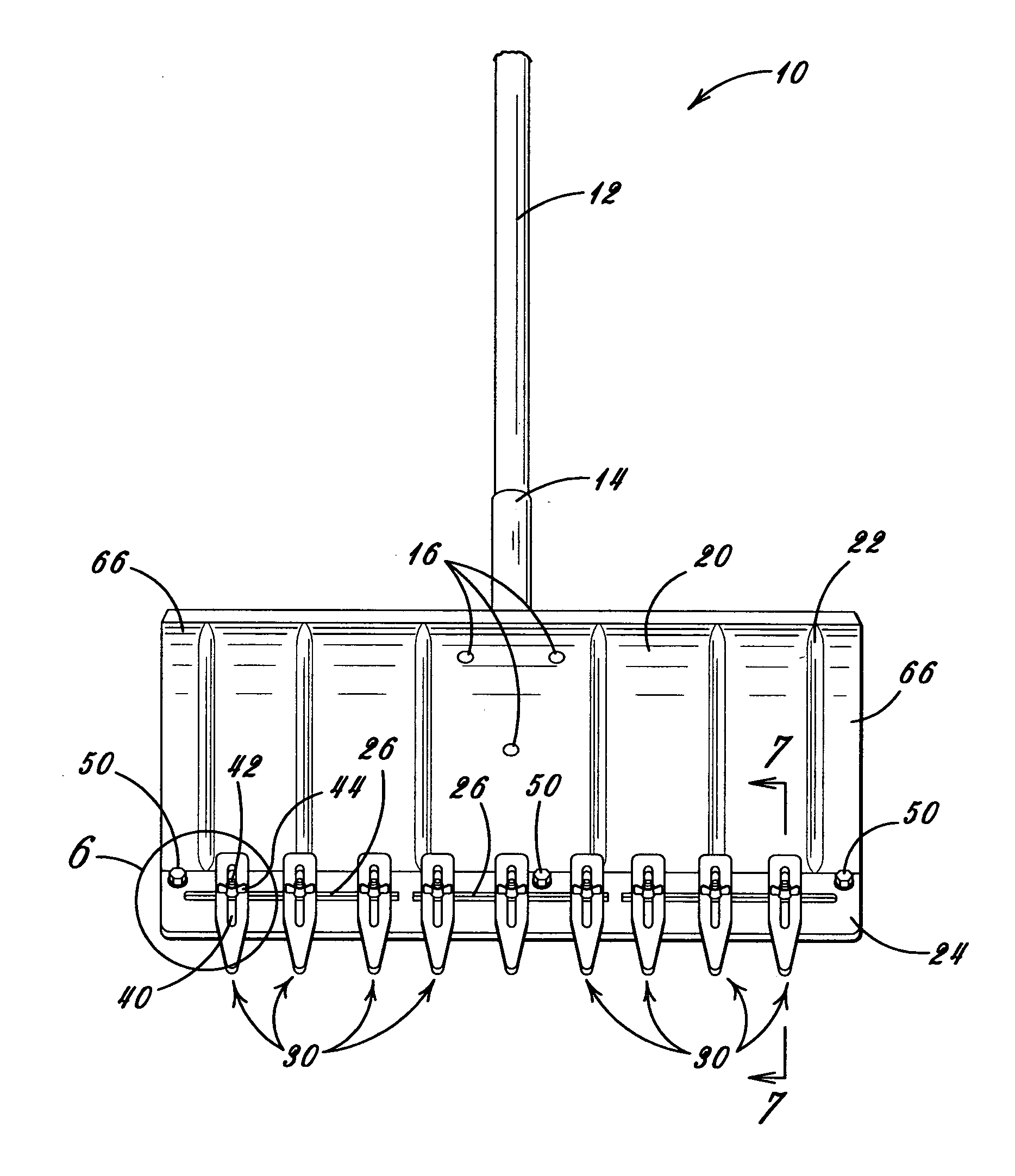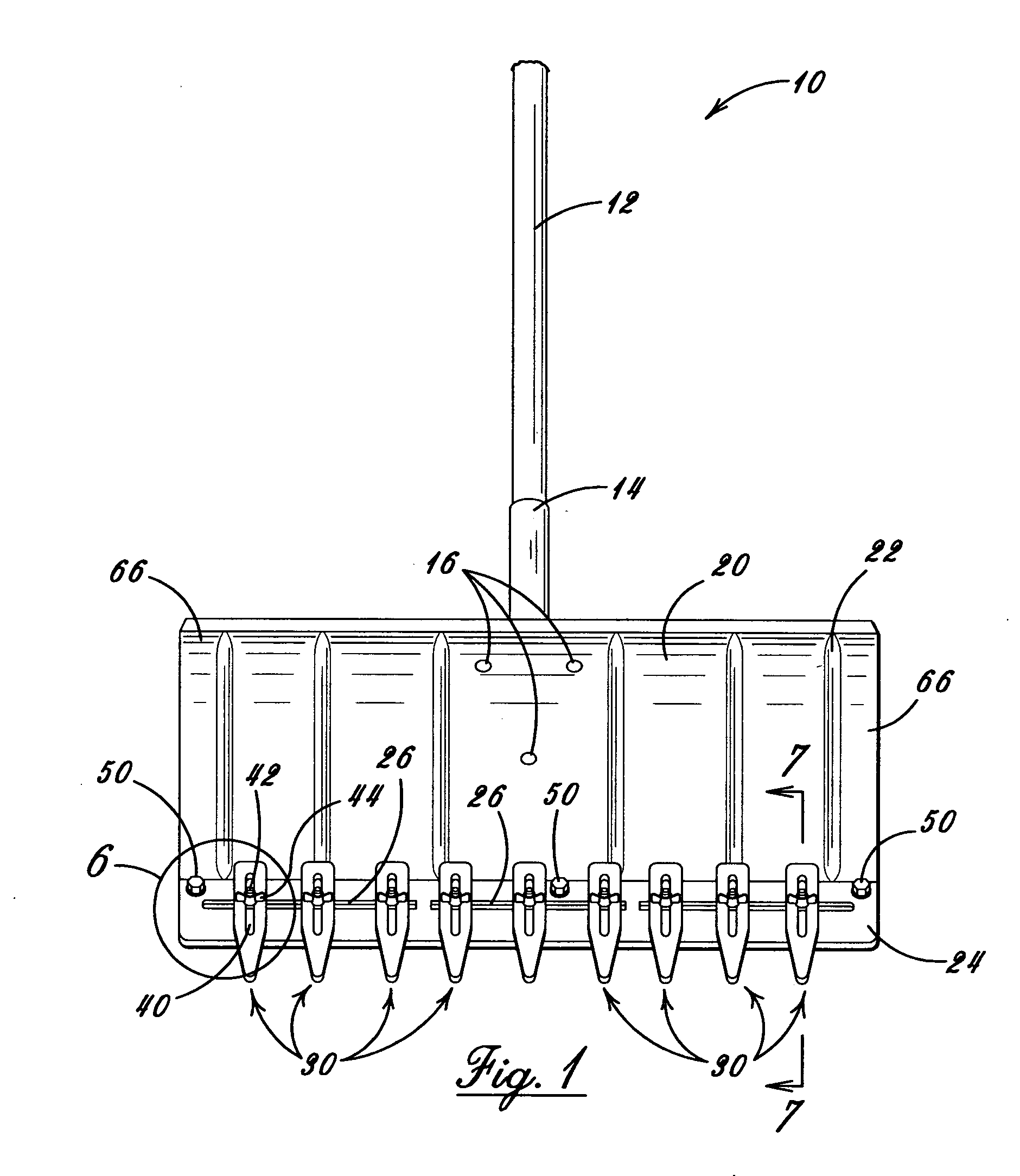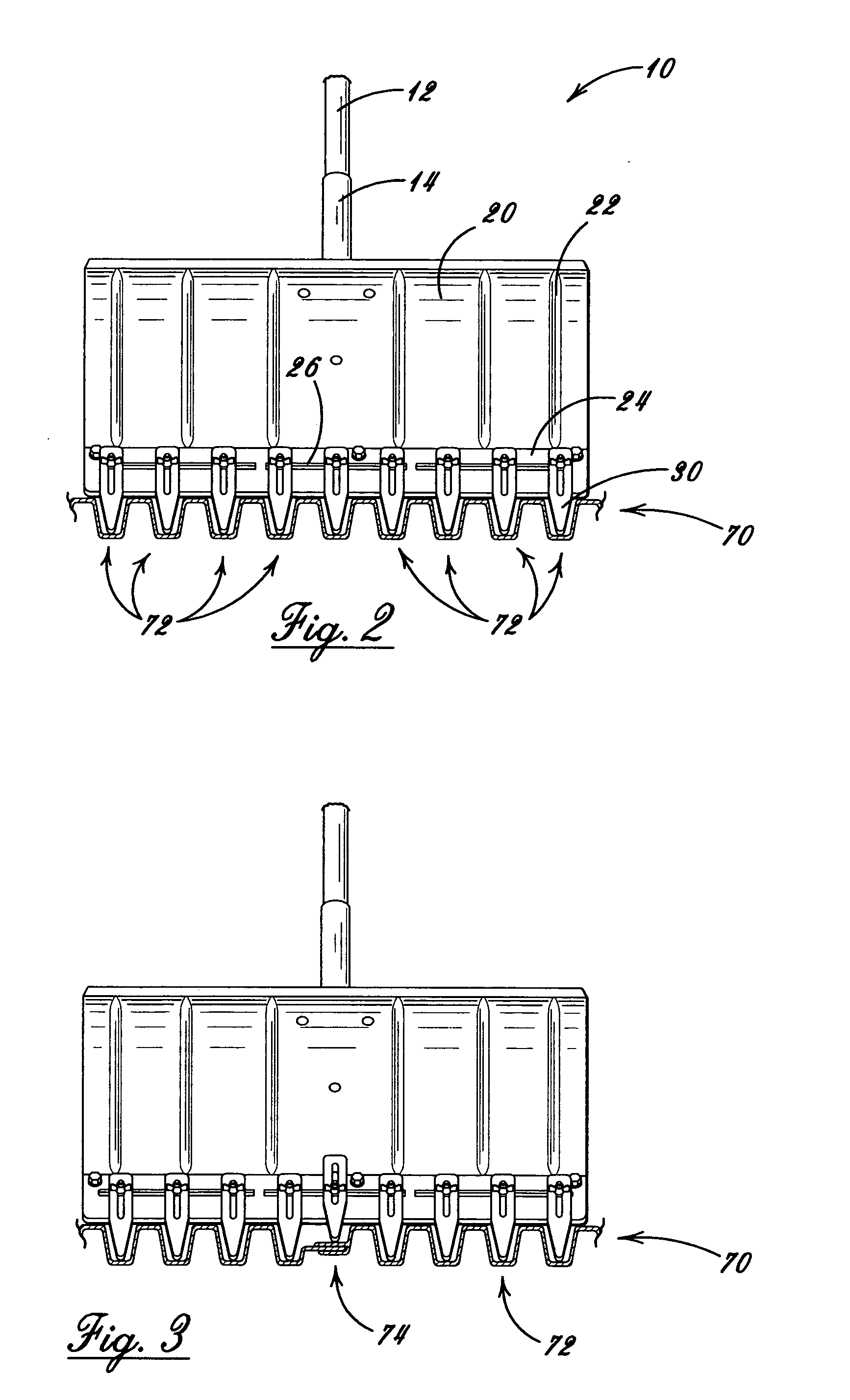Hand manipulated pusher apparatus with adjustably spaced teeth for cleaning uneven corrugated surfaces
a pusher and uneven technology, applied in the direction of cleaning equipment, carpet cleaners, cleaning apparatus and processes, etc., can solve the problems of insufficient standard shovels, difficult cleaning of corrugated floor surfaces of refrigerated bodies, and production of bottom layer to be crushed on the corrugated floor
- Summary
- Abstract
- Description
- Claims
- Application Information
AI Technical Summary
Benefits of technology
Problems solved by technology
Method used
Image
Examples
Embodiment Construction
[0024] The following detailed description is of the best presently contemplated mode of carrying out the invention. The description is not intended in a limiting sense, and is made solely for the purpose of illustrating the general principles of the invention. The various features and advantages of the present invention may be more readily understood with reference to the following detailed description taken in conjunction with the accompanying drawings.
[0025] Referring now to the drawings in detail, where like numerals refer to like parts or elements, there is shown in FIG. 1 a front plan view of the pusher apparatus 10 of the present invention. The pusher apparatus 10 comprises a handle 12, a blade 20, and an edge plate 24 onto which a plurality of laterally and vertically adjustable teeth 30 are arrayed.
[0026] The pusher blade 20 is an essentially planar element, generally rectangular in shape and is preferably formed from a strong material such as galvanized sheet steel, a sui...
PUM
 Login to View More
Login to View More Abstract
Description
Claims
Application Information
 Login to View More
Login to View More - R&D
- Intellectual Property
- Life Sciences
- Materials
- Tech Scout
- Unparalleled Data Quality
- Higher Quality Content
- 60% Fewer Hallucinations
Browse by: Latest US Patents, China's latest patents, Technical Efficacy Thesaurus, Application Domain, Technology Topic, Popular Technical Reports.
© 2025 PatSnap. All rights reserved.Legal|Privacy policy|Modern Slavery Act Transparency Statement|Sitemap|About US| Contact US: help@patsnap.com



